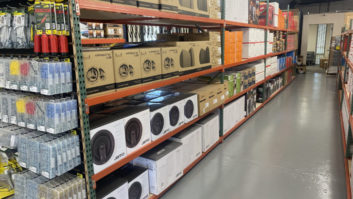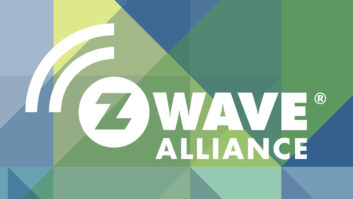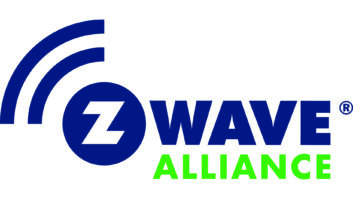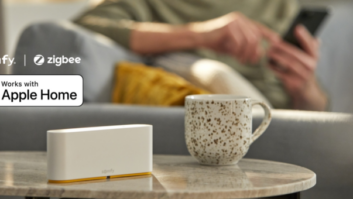
Mark Walters, a longtime technology figure in the home-automation market, was appointed recently as strategic development VP at the Zigbee Alliance (ZigBee.org), a non-profit association of around 400 companies that collaborate to develop and promote open, global wireless standards for the Internet of Things (IoT) for use in consumer, commercial and industrial applications.
He comes to the association with more than 20 years’ experience in electronics, including product design and development.
Before joining the ZigBee Alliance, Walters was chairman of the Z-Wave Alliance standards organization, which developed the wireless Z-Wave home-automation technology.
Now that Walters has settled into his new job, TWICE asked him about the top action items on his agenda, how the home-automation market is evolving, challenges facing the market, the impact of an influx of new wireless home-automation technologies, and more. Here’s what he had to say:
TWICE: Outline your responsibilities as VP of strategic development.
A key responsibility of my position is to pursue strategic relationships with other important players and initiatives in the rapidly expanding IoT market space. We understand that this market cannot be tackled alone, and we are actively leveraging these partnerships for the benefit of our members and the market.
I am also working to ensure that we are providing excellent value to our member companies, whether that is through standards development, market development, education and training, or other offerings. I want to keep the alliance current and growing and continue to set the direction for wireless communications and connected devices worldwide.
Another key component of my work is to bring sense to a congested and messy technology landscape, accelerating market adoption of connected and smart devices. I want to provide a path for companies large and small to bring their unique value propositions to the IoT playing field.
TWICE: What are the first action items on your agenda?
To position the alliance and its technologies so their values are obvious and easily accessed by stakeholders worldwide. Another top priority is launching ZigBee 3.0, the alliance’s culmination of 12 plus years of application standardization into a singular branded interoperable ecosystem. I also want to help provide more market-facing value for our members’ products and solutions. This will involve updates such as stronger branding and certification programs, marketing and channel development, solutions evangelism, and strategic partnerships.
TWICE: What are your biggest challenges?
The biggest challenge in the home market is awareness of the possibilities and value of a smart connected home. It is demand for products. For the industry as a whole, interoperability and ease-of-use remain a challenge. As with any emerging market, companies first chose to do their own thing, to keep a closed ecosystem. I think we are nearing an end to this phase, and we expect to see companies that first implemented ZigBee technologies in a closed or unique-to-the-manufacturer way change over to one of the interoperable standards like ZigBee 3.0.
TWICE: What is ZigBee 3.0, and why does the alliance say it will help reduce market fragmentation and further promote the suitability of ZigBee standards for the IoT?
ZigBee 3.0 is an initiative that creates a complete solution for interoperable ZigBee products across several vertical markets. It consolidates the varied, non-interoperable applications profiles into one interoperable Consolidated Applications Library.
I say complete solution in that ZigBee 3.0 includes the IEEE 802.15.4 2.4GHz radio layer, the industry-leading ZigBee PRO mesh networking stack with the Green Power energy harvesting features, and the new Consolidated Applications Library. ZigBee 3.0 provides a path to a single set of interoperable device profiles that cut across vertical market boundaries, which will reduce fragmentation. To consumers, it simply means they can look for the ZigBee 3.0 brand on the product and know it will interoperate with all other ZigBee 3.0 products. For the manufacturer, it means a single decision to cover all markets; no more trying to bet on whose ecosystem to support.
TWICE: Is the variety of wireless home-automation standards sowing confusion among consumers and preventing the market from growing faster?
This variety is a double-edged sword. On one hand, it does create some confusion and could delay the market; on the other hand, having several new large players in the home-control market really helps to increase awareness and interest in the market. The attention we are seeing from Apple, Google, Samsung, Thread and others are helping the market grow.
The ZigBee Alliance has several initiatives in place to help reduce this fragmentation and bring some sense to the market. The most important initiative is the Consolidated Applications Library. We feel this library is the IoT’s best set of device profiles and are working to ensure its broad adoption by the industry.
TWICE:How will the emergence of the Bluetooth-mesh standard affect ZigBee and Z-Wave adoption?
In theory it becomes yet another contender for the mesh-networking market. In practice is serves a slightly different purpose. The Bluetooth technology doesn’t provide the same physical range that comes with Zig- Bee or Z-Wave, meaning a Bluetooth mesh will need more devices to work than a ZigBee or Z-Wave network. We have to remember this is a very new standard; there are no products and very few device profiles, and it is many months before we will see Bluetooth-mesh products. It has taken ZigBee and Z-Wave 12 or more years to establish their applications profiles for the IoT; I see this as a 12-year head start on the market that Bluetooth will have to overcome. I think Bluetooth will remain very strong in the personal area network (PAN) market, but it is fighting an uphill battle to emerge in the home area network and building area network markets.
TWICE: How will the emergence of the wireless DECT-ULE standard in DIY products affect ZigBee and Z-Wave adoption?
I think it is the same story as above with Bluetooth. They are late to come to the market, have very little adoption for the ULE standard, have no applications library, and although their radio or transport layer has some unique benefits, I don’t see them getting enough momentum to become or remain an independent player in the broad home area network.
TWICE: How will Apple’s HomeKit impact the home automation market? Will it expand awareness or add to consumer confusion?
HomeKit expands awareness and promises iOS users a high-quality curated user experience with home control products. I don’t think it adds to consumer confusion. Although some are expecting to see Apple-branded home control products, I don’t think that is where they are heading.
TWICE: How quickly is the DIY home-automation market growing?
The DIY market is growing. We see strong offerings in North America with programs in stores such as Lowes, Home Depot, Staples and others. We also have several offerings that are available online but not yet in brick-and-mortar outlets.
The stronger market right now is for what we call assisted delivery; these are your cable and telco operator programs as well as the offerings from monitored security companies. I don’t have any hard numbers to offer because the ZigBee Alliance doesn’t sell these products; our member companies do. We do have reports from several of our member companies who supply the ZigBee platforms that go into these products. They have reported their sales are seeing compounded average growth rates in the 20 to 30 percent range. We believe most of this growth is in the home control market.
TWICE:Which segments of the DIY market are growing the quickest?
Cameras and door locks are the fastest moving products at this time, followed by lighting and smart plugs. Thermostats are also quite popular with the DIY market.
TWICE:What challenges does the DIY home-automation market face? Ease of use? Reliability? Lack of awareness?
All of the above. While the industry has come a long way in ease of use, there is still room for improvement. Reliability is consistent if the products are installed properly. Another issue we run into is mesh networks with too few devices, or networks composed of mixed technologies that don’t support a common mesh.
Awareness is improving but still lacking. People are becoming aware of “smart” connected products, but they are not sure how they benefit by engaging with them. The ZigBee Alliance has many different initiatives in place that will improve all of the above.
TWICE:What impact have service providers such as alarm companies, cable companies, telcos and the like had on the DIY market?
We see the service providers or assisted delivery providers stimulating awareness and kick starting this market. Most service-provider offerings encourage DIY follow on. We don’t see service providers as competing with DIY; they are separate and complementary markets.
TWICE:Describe DIY home-automation systems and the market 10 years from now.
Ubiquitous and transparent. You simply pick up what you want at the local hardware store, consumer electronics store, or online, take it home and “plug it in.” No worries about interoperability or networking; your home has a smart hub somewhere, and it takes care of all the potential technical hurdles.













